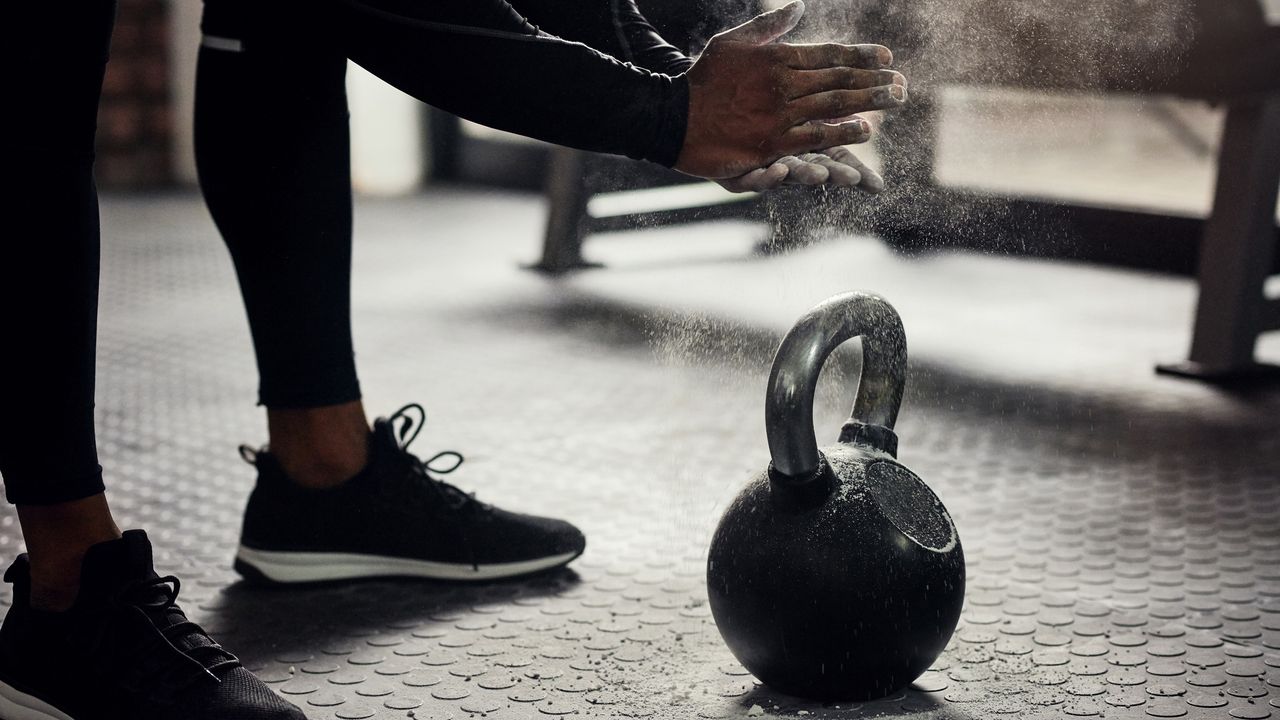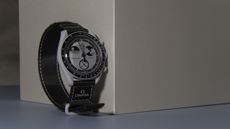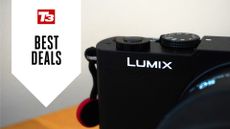

Believe it or not, this probably is the most spartan full-body kettlebell workout ever: you'll only need one kettlebell and some willpower to complete this routine. Much like the 10,000 swings kettlebell workout, this 2-move full-body kettlebell workout utilises compound exercises to reduce workout time and maximise efficiency.
The idea for this 2-move full-body kettlebell workout came from Pavel Tsatsouline, the man behind a kettlebell training company called StrongFirst. He introduced SPETSNAZ training techniques from the former Soviet Union to US Navy SEALs workouts, as well as those of the Marines and other armed forces in the US. In an interview with Joe Rogan, he mentioned his workout routine only consists of two exercises: kettlebell swings and dips.
Working out at home can save you a lot of money, but even the best home workout can take time. This full-body kettlebell workout uses only two exercises and one piece of home gym equipment. Use this 2-move wonder to get fit and build muscle at home or in the gym, using only the best kettlebell you can find (and some perseverance).
What makes this 2-move full body kettlebell workout effective?
Why those two exercises? First of all, both are compound movements and use many muscles simultaneously, unlike bicep curls. They also work most muscles in your body; the kettlebell swing is essentially a barbell deadlift alternative that uses more explosive movement, while the bodyweight dip compliments the kettlebell swing perfectly as it works the triceps and the shoulders most.
These two exercises also make Pavel's workout a super-simplified push-pull workout; it combines a pull movement, the swing, with a push movement, the dip. Our version puts a twist on this because not only do we all want big arms and pecs, but we also want to use the least amount of equipment and having a multi-gym equipped with a dip station is not considered minimalist, in our books anyway.
So, instead of dips, we'll do push-ups as they work the triceps, the core and the pecs perfectly, maximising the results in the shortest amount of time. If you need to polish up your knowledge of push-ups, take a look at our how-to-do push-ups guide. Push-ups are also just as good as bench presses anyway, according to science.
Warm up, cool down and nutrition
Efficient muscle building very much depends on eating correctly. During workouts, you overexert your muscles, and to help them repair quickly, you'll need protein. This constant cycle of damaging, resting and repairing your muscles will eventually lead to muscle growth and requires protein.
Sign up to the T3 newsletter for smarter living straight to your inbox
Get all the latest news, reviews, deals and buying guides on gorgeous tech, home and active products from the T3 experts
Protein should be supplied from a variety of sources, including lean meat, fish, eggs, green vegetables, tofu, nuts and so on. Additionally, you can use protein powder shakes and protein bars to have some protein on the go or post-workout.
Neither kettlebell swings nor push-ups are beginner exercises, so you mustn't skip warm-up before starting your workout. You'll use your core for both moves, so doing some of the best core exercises is recommended. Shoulders definitely need warming up: resistance band lateral raises and squats are a great way to get your heart pumped and joints mobilised.
After the workout, do some stretching to relax the muscles. Adding on a few cool-down exercises is also a great way to burn extra calories: your heart rate is higher after working out, so even stretching burns more calories than just being done on its own.
How to perform this 2-move full body kettlebell workout
Depending on your fitness level and the length of time you would like to spend exercising, do one exercise for 30-60 seconds with a 15-30-second break in between. For a good burn, try to do 3-4 rounds back to back plus a little warm up and cool down: that takes roughly 10 minutes.
If you want to make this workout time-efficient, perform the exercises back-to-back for 60 seconds (30 seconds of kettlebell swings followed by 30 seconds of push-ups), then rest for 15-30 in between sets. Do it as many times as you can before fatigue sets in. Drink plenty of water before, during and after the workout. To introduce some structure, you can try the ladder method: gradually increasing the length of the exercise while reducing the length of the breaks.
Kettlebell swing
In-depth: how to master kettlebell swings
Start with your legs a little over shoulder-width apart, kettlebell resting between your legs, spine neutral, core engaged. Reach down and grab the kettlebell with both hands, keeping the back straight, bending the knees and holding your body balanced with your core, glutes and quads.
Swing the kettlebell back between your legs, then pull it up about chest high, keeping the back straight all the way through. It's paramount to keep your shoulders open as much as possible throughout the movement. Your hips function as a hinge, and you rock back and forth on this hinge while the spine stays neutral.
When you finish with the swings, set the kettlebell down correctly by swinging it back between your legs one last time, and as you swing it forward, you lean back slightly and place the bell down as the momentum stops. This takes some practice, and be careful not to lean back too much, as you can fall on your butt.
Push up
In-depth: how to master push-ups
Starting position is arms extended and shoulder-width apart whilst you are facing the floor. Make sure your palms are directly under your shoulders on the floor. Core and glutes engaged, back straight. It is essential to keep the core engaged through the entire motion. Don't let your hip drop and 'sag in the middle' or push your bum out as you bend your elbows.
Another crucial aspect of doing push-ups is the position of the elbows. Don't let them stick out, keep them tucked at a 45-degree angle. Bringing them closer would work the triceps more; flaring them out is just bad form.
Focus on the muscles you want to work throughout the exercise, not just on the way up but also as you lower your body. Keeping the muscles under tension for longer means they are worked harder, and harder work, as we all know, will deliver results quicker.
T3's how-to exercise guides
- How to do push ups: from easy press ups to the best push up variations to work pecs, triceps and delts
- How to squat right: the barbell back squat is the best exercise for a toned butt and strong legs
- How to deadlift correctly: a full body workout in one move for stronger arms, back and legs
- Overhead press: how to perform this classic exercise for big arms and quick shoulder gains
- How to do barbell rows the right way: why bent over rows are great to build big back and strong arms
- How to do thrusters: this squat variant is a leg day staple AND a one-move full body exercise
- How to use an ab roller: get a six pack FAST with this cheap home gym staple
- Chin up vs pull up: what's the difference, muscles worked and WHAT IS THE BEST ONE?
- How to do ab crunches for beginners: the best stomach exercises to tone up
- How to bench press effectively and safely: this classic exercise will build a massive chest and big arms and shoulders too
- How to do hardstyle planks: try this plank variation for quicker summer body six-pack gains
- How to do burpees: master this much loved/hated full-body cardio exercise easily
- How to do Navy SEALs burpees: the HARDEST burpee variation will build muscle and burn fat at the same time
- 3 common exercises you're doing wrong and how to fix them

Matt Kollat is a journalist and content creator who works for T3.com and its magazine counterpart as an Active Editor. His areas of expertise include wearables, drones, fitness equipment, nutrition and outdoor gear. He joined T3 in 2019. His byline appears in several publications, including Techradar and Fit&Well, and more. Matt also collaborated with other content creators (e.g. Garage Gym Reviews) and judged many awards, such as the European Specialist Sports Nutrition Alliance's ESSNawards. When he isn't working out, running or cycling, you'll find him roaming the countryside and trying out new podcasting and content creation equipment.
-
 A Week on the Wrist with the Omega x Swatch MoonSwatch Mission to Earthphase – I was wrong about this watch
A Week on the Wrist with the Omega x Swatch MoonSwatch Mission to Earthphase – I was wrong about this watchThis MoonSwatch is a groundbreaking watch
By Sam Cross Published
-
 Who needs a Fujifilm X100VI with a mirrorless camera deal this good?
Who needs a Fujifilm X100VI with a mirrorless camera deal this good?The Panasonic Lumix S9 is £500 off at Amazon
By Sam Cross Published